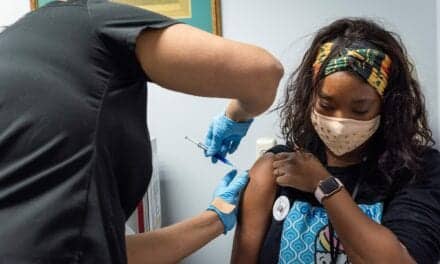Researchers have identified certain SARS-CoV-2 variants that may have the ability to escape the body’s immune response and warrant deeper surveillance.
The T cell response in humans is genetically encoded by HLA molecules—this means different individuals have different HLAs, programmed to recognize invading pathogens based on different parts, or “epitopes” of the pathogens. With thousands of different HLA molecules in the human population and thousands of possible epitopes in any given virus, the experimental evaluation of the immune response of every human HLA allele to every viral variant is not feasible. However, computational methods can facilitate this task.
In the new study, researchers first determined the full set of SARS-CoV-2 variants (epitopes) from an original reference strain of SARS-CoV-2 from Wuhan, China. The team discovered 1,222 epitopes of SARS-CoV-2 that were associated with major HLA subtypes, covering about 90% of the human population; at least 9 out of every 10 people can launch a T cell response to COVID-19 based on these 1,222 epitopes.
Then, the researchers computationally analyzed whether any of 118,000 different SARS-CoV-2 isolates from around the world, described in a National Center for Biotechnology Information (NCBI) dataset, had mutations in these epitopes. 47% of the epitopes, they showed, were mutated in at least one existing isolate. In some cases, existing isolates had mutations in multiple epitope regions, but cumulative mutations never affected more than 15% of epitopes for any given HLA allele type. When the team analyzed susceptible alleles and the geographic origin of their respective escape isolates, the team found that they co-existed in some geographical regions—including sub-Saharan Africa and East and Southeast Asia—, suggesting potential genetic pressure on the cytotoxic T cell response in these areas.
“The accumulation of these changes in independent isolates is still too low to threaten the global human population,” the authors say. “Our protocol has identified mutations that may be relevant for specific populations and warrant deeper surveillance.”
However, Martín-Galiano notes that “unnoticed SARS-CoV-2 mutations” might in future “threaten the cytotoxic T response in human subpopulations.”
sars-cov-2 variants










